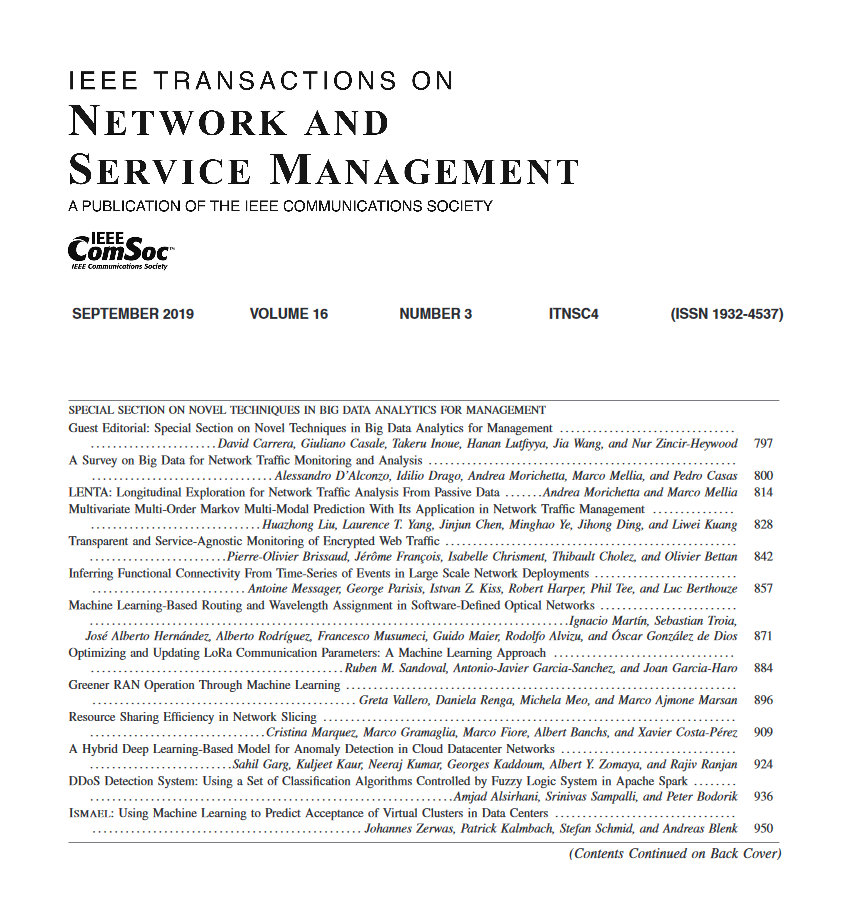Semantic-Aware Federated Blockage Prediction (SFBP) in Vision-Aided Next-Generation Wireless Network
IF 5.4
2区 计算机科学
Q1 COMPUTER SCIENCE, INFORMATION SYSTEMS
IEEE Transactions on Network and Service Management
Pub Date : 2025-01-02
DOI:10.1109/TNSM.2024.3525338
引用次数: 0
Abstract
Predicting signal blockages in millimetre-wave and terahertz networks is essential for enabling proactive handover (PHO) and ensuring seamless connectivity. Existing approaches utilizing deep learning, multi-modal vision and wireless sensing data primarily depend on centralized model training. Although these techniques are effective, they come with high communication costs, inefficient bandwidth usage, and latency issues, which restrict their real-time applicability. This paper proposes a Semantic-Aware Federated Blockage Prediction (SFBP) framework, leveraging the lightweight computer vision technique MobileNetV3 for edge-based semantic extraction, lowering communication and computation costs. Furthermore, we introduce a Similarity-Driven Federated Averaging (SD-FedAVG) mechanism to enhance the robustness of the model aggregation process, effectively mitigating the impact of noisy updates and adversarial attacks. Our proposed SFBP framework achieves 97.1% blockage prediction accuracy, closely matching centralized learning methods, while reducing communication costs by 88.75% compared to centralized learning and by 57.87% compared to FL without semantic extraction. Moreover, on-device inference reduces the latency by 23% compared to centralized learning and 18% compared to FL without semantic extraction, improving real-time decision-making for PHO. Additionally, the SD-FedAVG mechanism improves prediction accuracy under noisy conditions, directly impacting the PHO by reducing the handover failure rate by 7%.视觉辅助下一代无线网络中语义感知联合阻塞预测(SFBP)
预测毫米波和太赫兹网络中的信号阻塞对于实现主动切换(PHO)和确保无缝连接至关重要。利用深度学习、多模态视觉和无线传感数据的现有方法主要依赖于集中的模型训练。尽管这些技术是有效的,但它们的通信成本高、带宽使用效率低和延迟问题限制了它们的实时适用性。本文提出了一个语义感知联邦阻塞预测(SFBP)框架,利用轻量级计算机视觉技术MobileNetV3进行基于边缘的语义提取,降低了通信和计算成本。此外,我们引入了一种相似驱动的联邦平均(SD-FedAVG)机制来增强模型聚合过程的鲁棒性,有效地减轻了噪声更新和对抗性攻击的影响。我们提出的SFBP框架实现了97.1%的堵塞预测准确率,与集中式学习方法非常接近,与集中式学习相比,通信成本降低了88.75%,与不进行语义提取的FL相比,通信成本降低了57.87%。此外,与集中式学习相比,设备上推理减少了23%的延迟,与没有语义提取的FL相比减少了18%,提高了PHO的实时决策。此外,SD-FedAVG机制提高了噪声条件下的预测精度,通过降低7%的切换失败率直接影响到PHO。
本文章由计算机程序翻译,如有差异,请以英文原文为准。
求助全文
约1分钟内获得全文
求助全文
来源期刊

IEEE Transactions on Network and Service Management
Computer Science-Computer Networks and Communications
CiteScore
9.30
自引率
15.10%
发文量
325
期刊介绍:
IEEE Transactions on Network and Service Management will publish (online only) peerreviewed archival quality papers that advance the state-of-the-art and practical applications of network and service management. Theoretical research contributions (presenting new concepts and techniques) and applied contributions (reporting on experiences and experiments with actual systems) will be encouraged. These transactions will focus on the key technical issues related to: Management Models, Architectures and Frameworks; Service Provisioning, Reliability and Quality Assurance; Management Functions; Enabling Technologies; Information and Communication Models; Policies; Applications and Case Studies; Emerging Technologies and Standards.
 求助内容:
求助内容: 应助结果提醒方式:
应助结果提醒方式:


